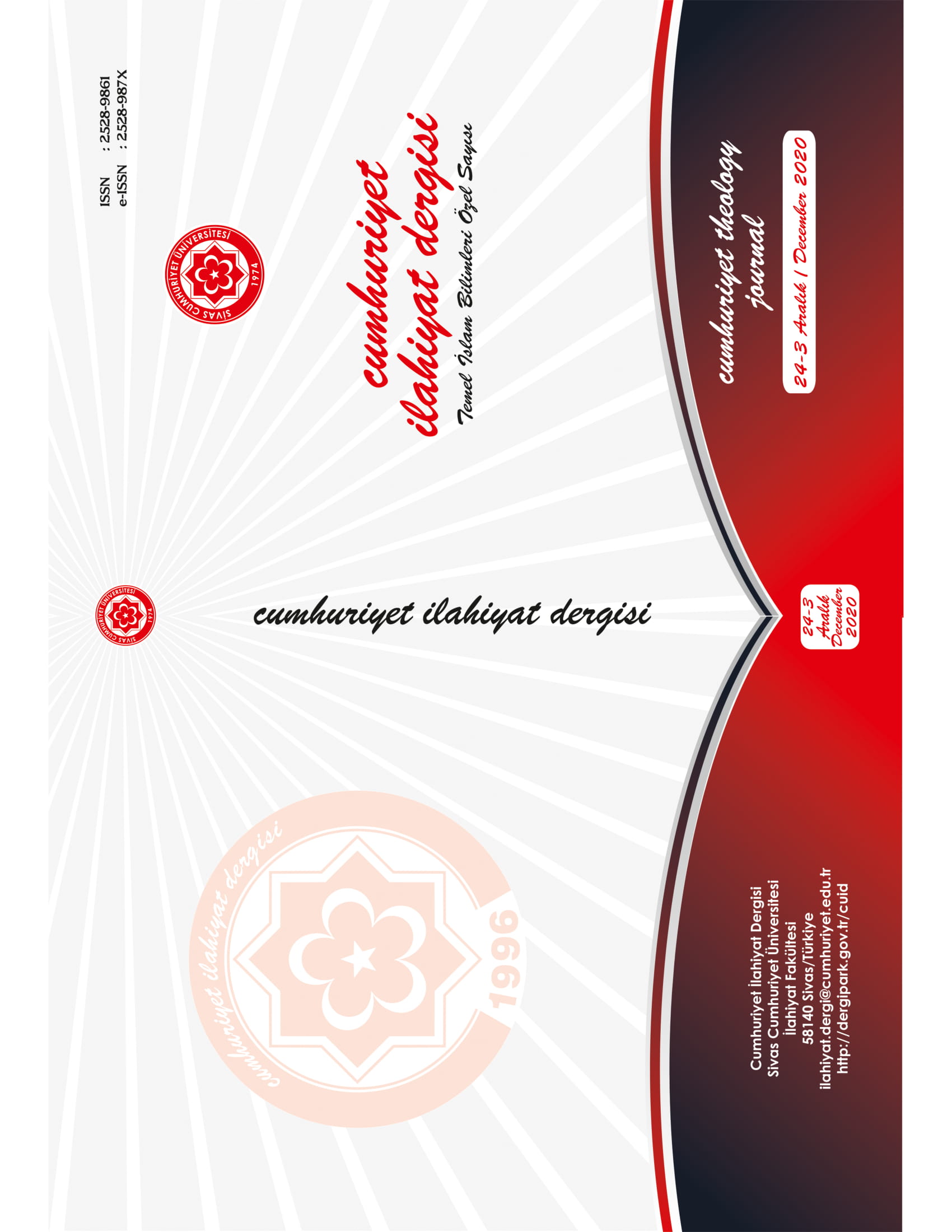Kur’ân’da Kozmik Kıyamet ile Hesap Gününün İç İçeliği ve Yoruma Etkisi
Intertwined Narration of Cosmic Qıyāmat and Doomsday in the Qur’ān and Its Effects to Interpretation
Author(s): Nurdane GülerSubject(s): Theology and Religion, Islam studies
Published by: Cumhuriyet Üniversitesi İlahyat Fakültesi
Keywords: Tafsīr; Qıyāmat; Cosmic Qıyāmat; Doomsday; Sūr;
Summary/Abstract: In Arabic and Turkish dictionaries, qıyāmat has a meaning that includes both the end of the world and the day of reckoning. In the Qur’ān, apocalypse is used for referring to the Day of Judgment. The end of the world is described mostly by as-sāa and similar words. First, in order not to cause any confusion, we will use cosmic qıyāmat for the event which will take place after the first blowing of the trumpet and which is called as-sāa by Qur’ān. We will use qıyāmat/doomsday for the event which will take place after the second blowing of the trumpet. According to Qur’ān, the cosmic qıyāmat begins with the first blowing of the trumpet. Its characteristic features are, such as a violent shaking, splitting of the sky, walking of the mountains hitting each other like clouds of dust, darkening of the stars, extinction of the sun and the moon at the same time, overflowing and boiling of the seas, and transformation of the world into a plain platform where there is neither a pit nor a mound after all. On the other hand, qıyāmat/doomsday begins with the second blowing of the trumpet. Since the sky has already opened and the earth has flattened like stretched animal skin as a result of the cosmic qıyāmat, the place is ready. Then people rise from their graves. They are sent in groups to the location of reckoning. There is a court before which no one is subjected to any unfairness; and at the end, there is heaven or hell. There are depictions of apocalypse in many chapters of Qur’ān. In these depictions, it is not clear whether it is the cosmic qıyāmat or the qıyāmat/doomsday. Qur’ān usually begins with depicting cosmic qıyāmat and lasts with portraying qıyāmat/doomsday. Namely, both processes are intertwined. This fact causes confusion between the depictions of cosmic qıyāmat and the ones of reckoning day. For example, the first 5 verses of Surah al-Qāriʿah describe the cosmic qıyāmat. Al-Qāriʿah is one of the names of the cosmic qıyāmat. It is portrayed as a terrible disaster, terrible voice and heart breaking horror. At that moment, people will be thrown here and there like blades around the fire. The mountains will be like coloured wool scattered around. Then the following verse describes the positions of those whose scales are heavy or light. As seen, after a terrifying short scene of cosmic qıyāmat, the verses rapidly pass to describe qıyāmat/doomsday. This is normal considering the dynamic perspective of Qur’ān. However, some commentators have linked the depiction in the first five verses to the following verses and interpreted it as the qıyāmat/doomsday. They tried to justify this through strained interpretations. The same is also true for Surah az-Zalzalah. The first five verses of this surah depict violent quakes, shedding of the heaviness of the earth, astonishment of the human being who are crying "what is happening to this?!". It is certain that violent quakes are referring to cosmic qıyāmat. The shedding of heaviness of the earth is interpreted as earth’s turning upside down. Some commentators claim that the heaviness of the earth means "humans and jinn". They say that this verse articulates the resurrection. In this case, for a meaningful integrity, the two following verses must be replaced. The earth reveals the dead that it has hided underground through resurrection. The reckoning begins and the earth speaks. Human become surprised by this and express their astonishment by crying, "what is happening to this (earth)". However, in such an interpretation, although a meaningful integrity is created via making a replacement, it is not easy to find a place for the following verse "People leave their graves in groups" (az-Zalzalah 99/6). It is reasonable to accept that the first five verses belong to the cosmic qıyāmat and the sixth verse belongs to the Day of Judgment. Because, as from the sixth verse, like in the previous chapter, it is mentioned that people will be removed from their graves in groups. Despite the confusion we have mentioned, this surah is also interpreted as if the whole surah belonged to qıyāmat/doomsday via linking the previous verses to the next verses, similar as in the Surah al-Qāriʿah. A similar confusion also exists in the Surah of al-Infitār, al-Inshiqāq and at-Takwīr. The examples clearly revealed the intertwining between the cosmic qıyāmat and the qıyāmat/doomsday depictions in the Qur’ān.. Knowing the intricacy between the processes of apocalypse scenes in Qur’ān will be a signal for a more accurate interpretation.
Journal: Cumhuriyet İlahiyat Dergisi
- Issue Year: 24/2020
- Issue No: 3
- Page Range: 1475-1496
- Page Count: 22
- Language: Turkish

